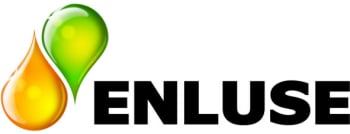
FIFO - First In First Out
The FIFO (First In, First Out) method stands as a pillar of accounting principles. This method, rooted in simplicity yet with profound implications, governs the flow and valuation of goods within a company's inventory. In this article, we delve into the depths of FIFO, exploring its advantages, disadvantages, and its application across various industries.
Advantages of FIFO
Accurate Costing:
FIFO generally provides a more accurate reflection of the current value of inventory on hand, as it matches current revenue with older, lower-cost inventory. This ensures that financial statements portray a more realistic picture of a company's financial health.
Reduces Risk of Obsolescence:
By ensuring that older inventory is used or sold first, FIFO can help reduce the risk of inventory obsolescence, particularly in industries with rapidly changing products or technologies. This can lead to cost savings by minimizing waste and write-offs.
Tax Benefits:
During periods of inflation, FIFO can lead to lower taxable income and higher reported profits, as it assigns lower, historical costs to goods sold, potentially resulting in tax savings. This can provide a significant advantage to businesses, especially during economic downturns.
Suitable for Perishable Goods:
FIFO is particularly beneficial for industries dealing with perishable goods, such as food, where it ensures that older items are sold or used first, reducing the risk of spoilage and waste. This not only minimizes losses but also enhances customer satisfaction by ensuring product freshness.
Disadvantages of FIFO:
Potential Overvaluation:
In times of rising prices or inflation, FIFO may result in overvaluing ending inventory, as it assigns older, lower costs to current inventory, leading to potentially inflated financial statements. This can mislead stakeholders and investors regarding the true financial position of the company.
Complexity in Tracking:
Implementing FIFO may be more complex than other inventory valuation methods, especially in scenarios where there are frequent purchases and sales or when there are variations in unit costs over time. This complexity can add administrative burden and increase the likelihood of errors.
May Not Reflect Real Cost of Goods Sold:
In certain situations, such as during periods of declining prices, FIFO may not accurately reflect the real cost of goods sold, leading to distorted financial reporting. This can undermine decision-making processes based on inaccurate cost data.
Cash Flow Impact:
FIFO can have implications for cash flow management, particularly if the cost of inventory has been steadily increasing. Selling older, lower-cost inventory may result in a higher cash outflow to replace inventory at current, higher prices. This can strain liquidity and working capital management.
In conclusion, while FIFO offers several advantages in terms of accurate costing, risk reduction, and tax benefits, it also comes with its share of disadvantages, including potential overvaluation, complexity in tracking, and cash flow implications. Understanding these pros and cons is crucial for businesses to make informed decisions regarding inventory management strategies, considering factors such as industry dynamics, market conditions, and financial objectives. By leveraging FIFO effectively while mitigating its drawbacks, businesses can optimize inventory management practices to enhance efficiency, profitability, and sustainability.
